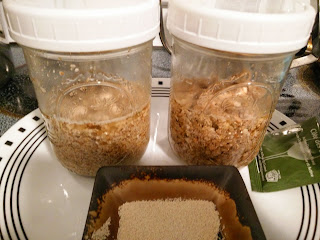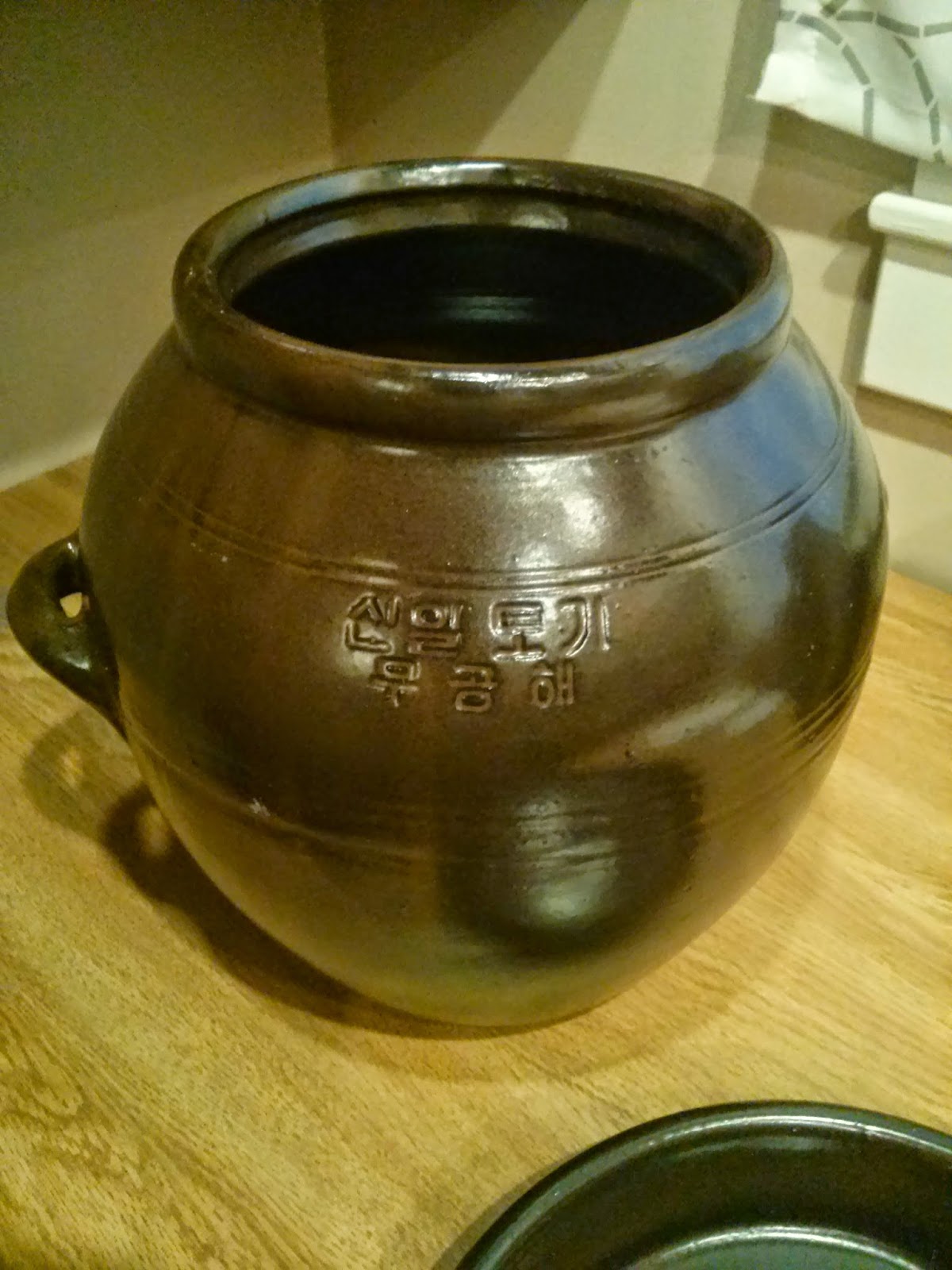Green Tea Makgeolli 녹차 막걸리
I'm starting my journey into infusing different ingredients during the brewing process. This move in inspired by a new book I picked up 술 만들기, and a recent delivery of ingredients from the in-laws. I'll post more info on those ingredients soon, but for today...
Green Tea Makgeolli 녹차 막걸리
For this brew I used a starter instead of pitching yeast in with the rice and nuruk. The starter is called seokim (석임) and was introduced in a previous post here. I'll explain how to make seokim below using the ratio from the previous post.
The green tea used was a gift from my aunt, a delicious Jeju green tea blend. I've been enjoying the tea itself for some time now and thought it would be a good compliment to this recipe.
Here's what you'll need:
For the seokim 석임 starter
- 250g rice flour
- 50g nuruk
- 2.5g wine yeast
- 25g wheat flour
- 300~400ml water (boiled)
In a large bowl, mix the rice flour with the boiling water. Add a little bit of water at a time and stir constantly. The flour will get very sticky as it cooks from the heat of the water. Let this cool to room temperature (~25 C). Soak the nuruk and yeast in a small amount of water, enough to cover the nuruk. Add the hydrated nuruk and yeast to the cooled, cooked rice flour. Mix in the wheat flour. I used whole wheat flour, but I'm sure all-purpose would also work. The starter will sit for 24-36 hours at 23-25 C as it develops.
When it is first mixed together it is about the consistency of thick mashed potatoes. As the yeast consumes the starches the mixture becomes more liquid. This is about 1/4 of the original recipe, and it still turned out well. Altogether it yielded ~500ml of starter.
For the green tea makgeolli 녹차 막걸리
- 1kg sweet rice (chapssal 찹쌀)
- 25g green tea (dry)
- 100g nuruk
- 250ml seokim 석임
- ~1.25l water
Prepare the rice by steaming it to make godubap. Don't forget to wash and soak the rice before you steam it! Set the rice aside to cool to ~25 C. While the rice is being made, brew the green tea in the 1.25l of water. If you use hot water to brew, the tea will need to cool down to room temperature. Alternatively, you can cold brew the tea the night before and forego the cooling process, which is what I did. Keep in mind the flavor may change slightly due to this decision. Also, soak the nuruk in a small amount of water while the rice is being prepared.
 |
| Day 1 |
 |
| Day 8 |
 |
| Bottling preparation |
 |
| A moment of pause to admire the hanji |
Post any questions in the comments section below.
Cheers!









Comments
Post a Comment